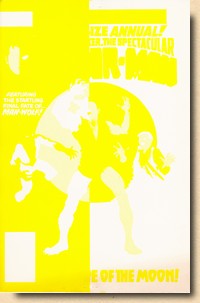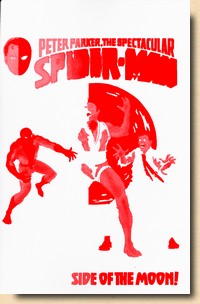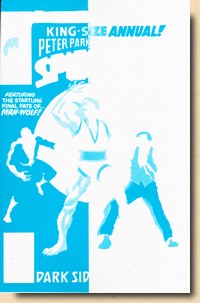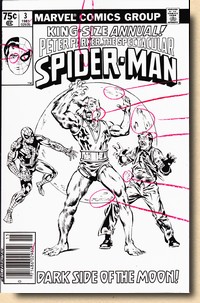 |
| |
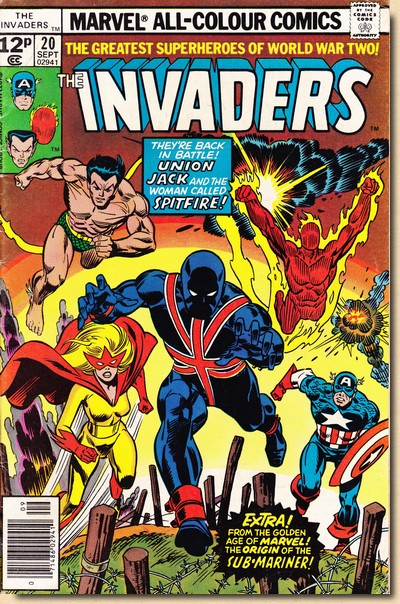 |
|
"PENNY
DREADFULS" FROM THE STATES
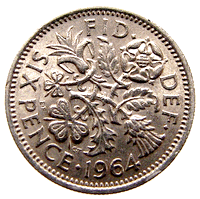 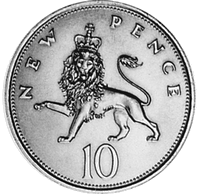
THE SILVER &
BRONZE AGE BRITISH PENCE
PRICE VARIANTS
 
|
|
| |
| Although Superman and
Batman material was reprinted by various publishers for
the British comic book market in the 1950s, it was all
put out in a very cobbled patchwork fashion. Then, in
1959, Thorpe & Porter Ltd became the official
distributor for DC comics (which they remained right
through to the 1980s after they were taken over by DC's
distribution outlet Independent in 1964), and one of the
major changes T&P brought to the British comic book
market was a direct supply and distribution of US
production run titles from DC comics. |
| |
| BIRTH
OF THE BRITISH PENCE PRICE VARIANT |
| |
| In October 1959, Batman
#127 and Superman #132 were the first
American comic books to officially be imported
and distributed to newsagents in Great Britain. A simple task in itself
(given that there was no translation or reworking
required to make these US comics accessible to
British readers), the only thing necessary was to
indicate to the newsagent how much he was to
charge his customers for this product - which
carried a printed price in US cents. The simple
solution was to apply an ink stamp to the cover
which spelled out the British currency price.
During the initial
test phase all DC titles were stamped this way -
a clear indication that the initial wave of US
imports to the British market must have been
rather small in numbers to make this manual price
marking feasible.
Issues imported to
Britain and sold with a 9d (9 pence) stamp at
this stage included titles such as Action
Comics , Adventure Comics, All-Star Western,
Batman, Brave and the Bold, Challengers of the
Unknown, Detective Comics, Flash, GI Combat,
House of Mystery, House of Secrets, Lois Lane,
Mystery in Space, Our Army at War, Our Fighting
Forces, Showcase, Star Spangled War Stories,
Strange Adventures, Superboy, Superman, Tales of
the Unexpected, Tomahawk, Western Comics, Wonder
Woman and World's Finest - as well
as Date with Judy, Falling in Love, Fox and
Crow, Girls' Love Stories, Girls' Romances, Heart
Throbs, Jerry Lewis, Pat Boone, Rudolph the
Red-Nosed Reindeer, Secret Hearts and Sgt
Bilko.
|
|
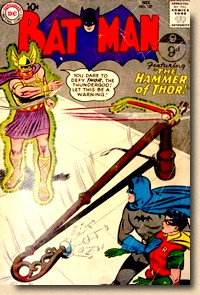
UK import Batman #127 (Oct 1959) with
9d. price stamp
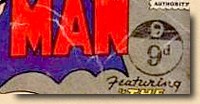
|
|
| |
| The success of these trial
imports must have been rather limited, a fact perhaps
tied to the low quantities available using the rubber
stamp price method, which in turn must have made
distribution patchy to say the least. As a result, US
printed DC comics would not be imported to the British
Isles again until mid-1971 (McClure, 2010). |
| |
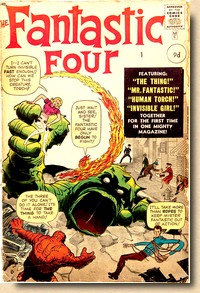
Fantastic Four #1 (Nov 1961)
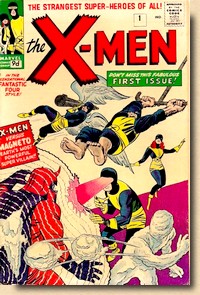
X-Men #1 (Sept 1963)
|
|
However,
Thorpe & Porter were also the official
distributors for Atlas, and subsequently Marvel
Comics, until about 1971. Since the
late 1950s and throughout the 1960s and 1970s,
Transworld Feature Syndication Inc. (run out of
New York by future Marvel president Al Landau)
oversaw the worldwide distribution of
Atlas/Marvel material (Kirby, 2013). Landau was
eager to push into new markets, and being able to
sell the identical product produced for the home
market in a second market with the sole
requirement of changing the price indication was
as simple as it would ever get.
Either influenced by
Thorpe & Porter's previous experience with
the DC titles or Landau's business sense, the
decision was made to actually print the British
currency price on the cover.
The first import and
distribution run of US comics with a printed
pence price of 9d (replacing the original 10¢
price) and minus the cover date on their cover
took place while Marvel was still publishing its
material as Atlas. The initial titles (cover
dated May 1960) were Gunsmoke Western
#58, Journey into Mystery #58, Kid
Colt Outlaw #90 and Millie the Model
#96. These were followed by Date with Millie
#5, Kathy #5, Patsy Walker #89,
Patsy and Hedy #70, Strange Tales
#75 and Two-Gun Kid #54 (all cover-dated
June 1960) before Tales of Suspense #10
and Tales to Astonish #10 (both July
1960) hit the British shores (comicpriceguide.co.uk).
It was the birth of
the Pence Price Variant
of US comics, which would go on to include
virtually every Silver and Bronze Age key Marvel
issue, be wrongly referred to as "UK
editions" or even "UK reprints" of
Marvel and DC titles, and be scorned and avoided
for the longest time as "penny
dreadfuls" even by UK collectors.
|
|
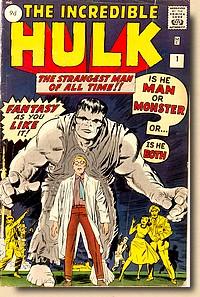
Hulk #1 (May 1962)
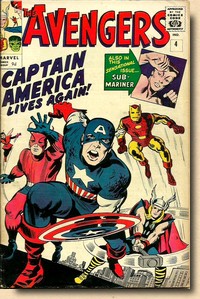
Avengers #4 (Apr 1964)
|
|
| |
| DEFINING
THE BRITISH PENCE PRICE VARIANT |
| |
| Predominantly Marvel's
playground (with DC and other publishers only chiming in
from time to time), the distribution of pence price
variants in the UK took place from May 1960 up until
September 1982 (with intermittent short breaks here and
there). As a result, many British comic book readers were
exposed to them over time, and many misconceptions grew
up around the pence price variants along the way. Some
erroneously considered them to be UK editions, while
others mistakingly believed them to be
"reprints" (a fate the pence price variants
share with the early "diamond" direct market
editions and most Whitman variants). In actual fact, they were variants
- which was far from being a commonly known concept in a
time and age when variant covers on comic books were
unheard of.
|
| |
Even today, there is little
published research on the topic of comic book
variants outside the collector's perspective on
variant covers, but Jon Martin McClure's
"History of Publisher Experimentation and
Variant Comic Books", published in the
2010/11 Overstreet Comic Book Price Guide,
provides ample in-depth insight. McClure
identifies a total of 15 types of variants, some
of which have subtypes, and lists the pence price
variant as belonging to Type 1a, which he defines
as follows:
"Cover
Price Variants intended for foreign
distribution with limited regional
distribution [i.e. for pence price variants:
UK only], published simultaneously with
standard or "regular" editions. The
indicia and all aspects of the book, except
for the cover price and sometimes the company
logo, are identical to a regular U.S.
edition." (McClure, 2010)
In other words: Pence
price variants were printed in the US at the same
location and time by the same company and on the
same paper as the regular US run
of that specific issue, and only differ from
these with regard to certain aspects of the
cover, while the interior pages are absolutely
identical (including editorial material
and even adverts).
|
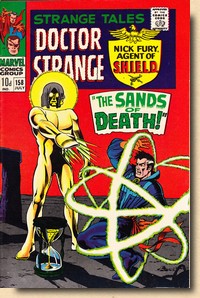
Strange Tales #158 (July 1967)
|
|
| |
| Initially, the difference
between a "regular" US cover and a pence price
variant was truly minimal - and even easy to overlook, as
this example from 1967 (taken from the covers of Strange
Tales #158= illustrates. There is indeed only one
divergence: the original 12¢ price has been changed to a
British currency of pre-decimal 10d (10 pence) -
everything else is exactly the same. |
| |
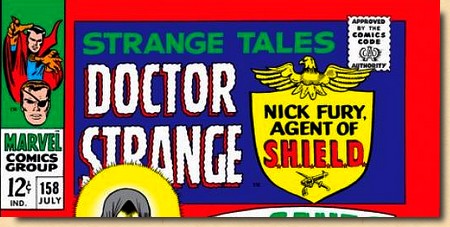 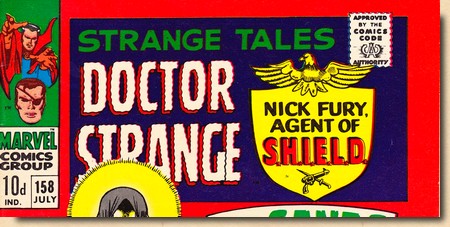 |
| |
| The difference remained
restricted to the price indication only for years, so
that even the MARVEL COMICS GROUP banner emblem
introduced in 1971 looked very much the same on US price
copies and pence price variants (although the emblem of
Marvel's US distributor Curtis was now dropped). |
| |
 
|
| |
| "MARVEL
ALL-COLOUR COMICS" |
|
| |
| But then, for the August
1974 cover date run (which went on sale in the US in May
but due to the slow surface shipping process usually
coincided with the actual month the comic book became
available in the UK), a major change occured - as
witnessed for example on the cover of Journey Into
Mystery (vol 2) #12. While the US copy retained the
standard MARVEL COMICS GROUP banner emblem, the UK pence
price variant now ran a banner reading MARVEL™
ALL-COLOUR COMICS. |
| |
 
|
| |
| The reason for this change
effectively went back to September 1972, when Marvel
Comics started their own UK imprint (semi-officially
known as Marvel UK) by launching a weekly comic book
entitled Mighty
World of Marvel which reprinted classic Silver Age material
and, put together in the New York offices, also
introduced the Marvel editorial style to the British
Isles. At
the time, the UK comic book market was still
quintessentially keyed at a weekly interval of
publication with predominantly black and white contents. The
Mighty World of Marvel followed this formula, was a
huge success, and was soon joined by other Marvel UK
weeklies such as Spider-Man Comics Weekly (launched
in February 1973) and The Avengers (September
1973).
|
| |
| By mid-1974, the success of
the three British reprint weeklies had Marvel
(and especially Transworld, the foreign market
stakeholder) looking to further expand its
presence on the British comic book market.
Accordingly, two new weeklies were launched In
October 1974: Dracula Lives! and Planet
of the Apes. Marvel Comics were riding on
a high in Britain, and attempting to expand on
this success was more than just second nature, as
Al Landau now had a combined personal interest:
he was not only invested in foreign market shares
through his Transworld Feature Syndication Inc.,
but since 1973 also as acting president of the
Marvel Comics Group.
"This
was when Cadence was running things, and the
person in charge of Cadence separately had a
deal to sell material overseas and was making
money every time we sold stuff overseas ,
which is why so many books came out (...)
that money went directly to them." (Marv
Wolfman in: Siuntres, 2006)
|
|
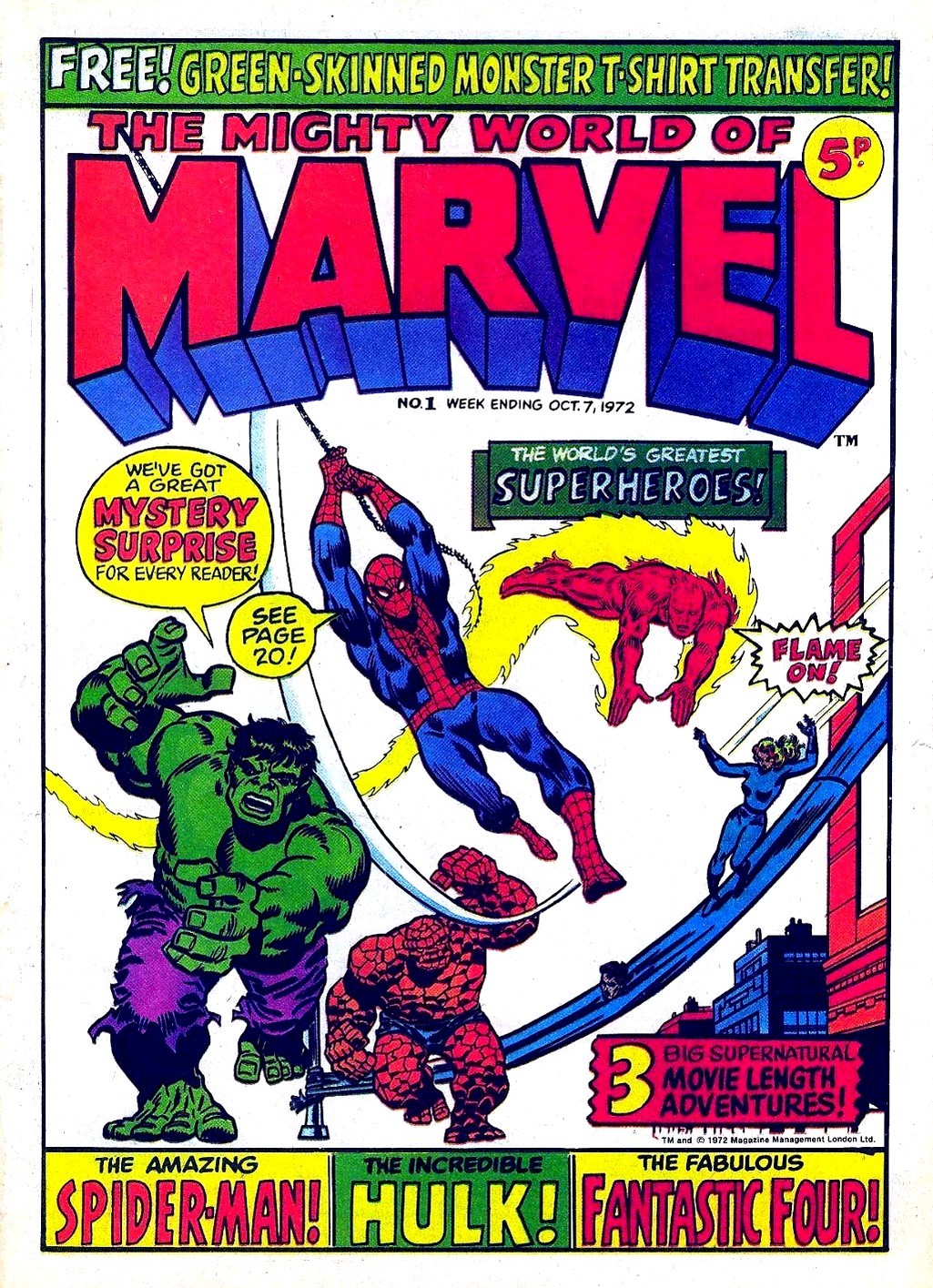
Mighty World of Marvel #1
launched Marvel's own UK imprint on 30 September
1972
|
|
| |
"Al
Landau, not one of my favorite people, succeeded
[Stan Lee] as president of Marvel. His company, Trans
World, had been selling Marvel's work in other
countries. (...) The only time Al and I were on the
same side (...) was when both of us wanted to get
back one of the pages of story we had lost in our
books. I wanted the page back just because I wanted
it back, for better stories — and he wanted it
because then his company Trans World could sell
another page abroad." (Roy
Thomas in: Lee & Thomas, 1998)
Marvel
had been expanding both in terms of titles and genres
ever since 1970, and this had been echoed by the large
variety of pence price variants produced and shipped to
the UK.
|
| |
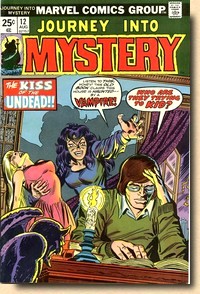
Journey Into Mystery (vol 2) #12 (Aug
1974) - 25¢ price
|
|
With the black and white
weeklies so successful, it must have seemed an
excellent opportunity to push on with this export
(from a US perspective) production even more, and
it was nothing but a logical marketing strategy
to highlight the fact that the pence price
variants, unlike the Marvel UK reprints, were all-colour. As
of August 1974, the difference between a
"regular" US comic book and its pence
price variant thus became much easier to spot -
and the MARVEL ALL-COLOUR COMICS banner would
become a familiar sight to British comic book
readers visiting their neswagent.
Ultimately, it turned into
something akin to a business card for the pence
price variants and remained unchanged right up
until October 1982, when Marvel ceased the
publication of British market variants.
|
|
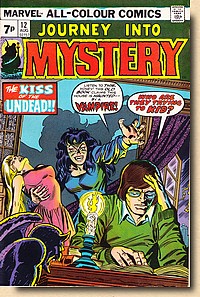
Journey Into Mystery (vol 2) #12 (Aug
1974) - 7p price
|
|
| |
| THE
PRODUCTION PROCESS FOR BRITISH PENCE PRICE VARIANTS |
| |
| Pence price
variants could be produced with absolute minimal extra
work and cost - which no doubt made the concept so
attractive to Marvel. This was because the comic books
concerned were all printed using the so-called "Four
Colour Process" (CMYK for short) which renders the variations in colours by
applying the so-called subtractive primaries Cyan
(blue), Magenta (purple) and Yellow. |
| |
| Mixing
yellow and cyan produces green colours, while
yellow mixed with magenta results in reds, and
magenta with cyan in blues. Mixing equal amounts
of cyan, magenta and yellow in sufficient density
produces black, but in order to save ink and
decrease drying times black is used as the fourth
colour pigment for the so-called "key"
(hence the letter K) printing
plate, which prints the artistic detail of an
image (Ferry, 1921). A four-colour printing press
therefore uses four printing plates - one for
each colour separation - wrapped around a
cylinder and inked with the relevant colour. As
paper passes through the press, the cyan,
magenta, yellow and black separations are printed
exactly one on top of the other. This can produce
a wide range of colours by combining different
tints of the four inks, as colours are split into
so-called "component separations".
|
|
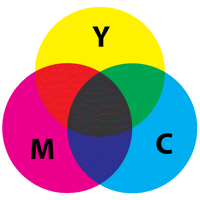
|
|
| |
| The colour separations used
for comic books up until the 1980s were fairly crude,
using only tones of 0%, 25%, 50%, 75% and 100% in a
coarse dot grid, and were done for both Marvel and DC at
the Chemical Color Plate Corporation in Bridgeport
(Connecticut). The process resulted in four overlays (one
each for CMYK) on Rubylith®
acetate, which then went to the camera for the so-called
shoot plates (a process which continued into the late
1990s before computer colouring took over). This process
of building up a multi-colour image from four components
can be seen from the colour separations for the cover of Spectacular
Spider-Man Annual #3 (1981): |
| |
|
| |
The actual sequence of the
three colour ink layers can vary according to the
desired final result. This is because the first
ink used "traps" the ones that follow,
defining the sequence as the first ink down must
have the highest "tack" (i.e.
stickiness), while the subsequent colours have
lower effective tacks (Pritchard, 2009).
|
=
|
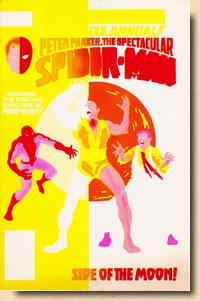
|
=
|
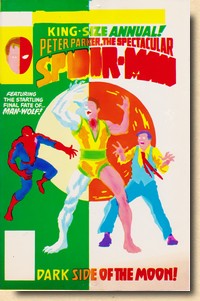
|
=
|
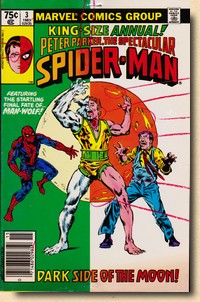
|
|
| |
In the case
of Spectacular Spider-Man Annual #3 the sequence
is YMCK, but in any combination the black plate will
always come last. And as can clearly be seen, all the
modifications required for the production of pence price
variant only concern this last colour separation plate.
|
| |
 |
| |
| All that was needed was a
second "K" plate which featured the
minimal adjustements of having a pence instead of
the cents price, plus changing the banner to the
trademark MARVEL ALL-COLOUR COMICS. The printer would thus run
the first print run with one black plate and
then, when the required number of covers had been
printed, exchange the K separation plates and
continue printing.
The sequence in
which this happened may have varied, but a number
of people have pointed out the likelihood that
the pence price variant covers were in fact
printed first, based on the fact that the initial
output at any printing press may get messed up,
and that Marvel and DC would, from a business
point of view, rather have had that happen to the
British distribution lot than to the home market
print run.
The same procedure
applied to Direct Market Editions and Whitman
comicpack issues, as illustrated by the cover
shown here: the DME black diamond replaces the
regular price indication, and the newsstand
barcode is replaced by a Spiderman face - all
done on the black colour separation plate only.
|
|
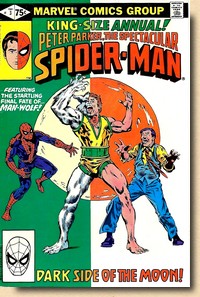
Spectactular Spider-Man Annual #3 (1981)
Direct Market Edition with "black
diamond" price and no barcode
|
|
| |
| CIRCULATION AND
DISTRIBUTION OF BRITISH PENCE PRICE VARIANTS |
|
| |
| Both McClure (2010) and the
online Comic Price Guide for Great
Britain (CPG)
seem to agree on the assumption that the proportion of
British pence price variant copies generally amounted to
somewhere up to 5% of the print run (while probably much
lower in the 1960s, nearer 2-3%). The statements of
ownership published in the May 1974 and 1975 issues of Fantastic
Four puts the total average monthly number of copies
printed for that title in the preceding 12 months at
roughly 425,000. This in turn would yield some 21,000
copies (equaling a share of 5% of the total print run) of
Fantastic Four pence price variants. It is quite
obvious from this example (using a title which had a
higher total print run than some other, minor Marvel
titles) that the circulation of pence price variants
comic books could wear thin rather quickly as they were
being spread out all over the UK. In 1974, even the black and white
Marvel UK reprint titles received letters from readers
who complained about their problems in finding pence
price variants:
"Distribution
of American mags. Yes, we're back on that again. I
have always been fortunate enough to live in an area
well-supplied with these (...) but sind February 1974
not a single one have I found!" (Letters page, Avengers [UK] #65, December 1974)
To which editorial
interestingly enough replied:
"From almost
every quarter, we receive letters from grateful
Marvelites stating that life is beginning anew for
them because once again they are able to lay their
eager hands on those US editions. We KNOW they're
here within these shores because we're SENDING 'em
here." (Letters page, Avengers [UK] #65, December 1974)
This exchange between
readers and editorial of Marvel UK on the subject of
"American mags" not only shows that Marvel
pence price variants and Marvel black and white UK
reprints were run as two outlets of one and the same
business (which, of course, they also clearly were), but
it also highlights a disagreement between McClure (2010)
and the CPG concerning the production window of pence
price variants. Whilst the CPG explicitly postulates an
uninterrupted publishing of pence price variants,
McClusky notes certain periods of time in which he states
no pence price variants were printed, i.e. between cover
dates of December 1964 and August 1965, December 1967
throught to March 1969, and April 1974 to July 1974. The
reply to this reader's complaint would seem to point more
in McClures's favour as it does hint at an interruption
of supplies ("we receive letters from grateful
Marvelites stating that life is beginning anew
for them because once again they
are able to lay their eager hands on those US
editions").
|
| |
In that very same issues of
the UK reprint Avengers a reader from
Swansea highlights another rather peculiar trait
of the pence price variants: their longevity in
terms of shelf life in some locations.
"While
on a hunting trip around the newsagents I
came across a mag called
"Daredevil" with a story called
"On the Horns of the Man-Bull"
price one shilling. I calculated that it must
have been at least 3 years old because
decimal coinage came to Britain in 1972.
Please could you give me some information on
it?" (Letters page, Avengers [UK]
#65,
December 1974)
Editorial provided
the requested information, namely that it was
"an
imported copy of U.S. edition of Daredevil.
It was issue 78 of the Daredevil series and
was published in July 1971." (Letters page, Avengers [UK]
#65,
December 1974)
|
|
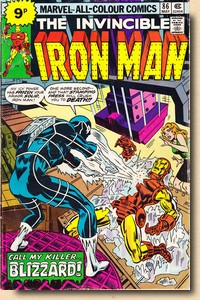
Iron Man #86 (May 1976)
|
|
| |
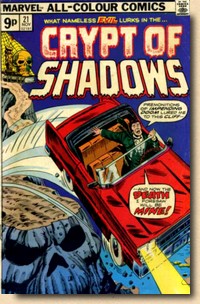
Crypt of Shadows #21 (Nov 1975)
|
|
Returnability
of unsold pence price variants, even if
offered in some ways, must have been
tricky - with the obvious result that
copies stayed on display until eventually
sold. This is how
and why I myself was able to pick up Iron
Man #86 (May 1976) at a newsagent in
Fort William in September 1976, and Crypt
of Shadows #21 (November 1975) and Chamber
of Chills #25 (November 1976)
together in September 1977 at the
newsagents of a servicing area on the M4
motorway southbound. These horror comics
both were the final issues of their
title, so maybe this also helped keep
them on the lowest shelf for almost two
and one year respectively beyond their
cover date.
WH Smith, on the
other hand, either sold all their copies
of one month or actually had a system in
place where new arrivals would make the
older copies disappear from the shelf.
|
|
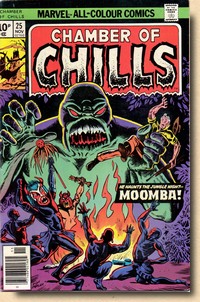
Chamber of Chills #25 (Nov 1976)
|
|
|
| |
| But even though
there clearly was no sense of market rivalry
between the pence price variants and the UK black
and white reprint weeklies, Marvel / Transworld
wasn't throwing all business caution to the wind
and did curb what must have been considered
unduly competition imposed by certain pence price
variants on the licensed UK market publications.
As a result, there are no pence price variants
for Amazing Spider-Man issues #121 - 214
according to the CPG. This measure was only
applied very moderately, however, as other
characters and titles - such as the Fantastic
Four or Hulk (which also appeared
regularly in the licensed black and white UK
reprints, with the Hulk being especially popular)
did not experience them. |
| |
| Availability
would vary from area to area and
periods of time, but a major
source for pence price variants
were the small number of
specialised resellers who would
sometimes operate a small shop
and sometimes rely on mail order
entirely. One of the
latter examples was Fantasy
Unlimited in Millwall, run by
Alan Austin who also published a
fanzine and advertised regularly
in the black and white Marvel UK
weeklies. Customers would receive
long typed lists in alphabetical
order on a regular basis by mail,
and orders were even shipped to
the continent - at no extra
charge.
|
|
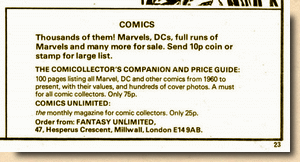
Advertisement in Planet of
the Apes (UK weekly) #102
(September 1976)
|
|
|
| |
| |
|
| OTHER PUBLISHER'S
BRITISH PENCE PRICE VARIANTS |
|
| |
| Marvel dominated the pence
price variant market to a large extent - not the least,
one might assume, because Transworld was honing its
foreign market skills as time went by and perfected
distribution of its line of comics to the British market
almost to an artform. But there were, of course, other
oublishers as well - Gold Key, for example, exported some
of its titles as pence price variants from May 1973 to
November 1975 (McClure, 2010). |
| |
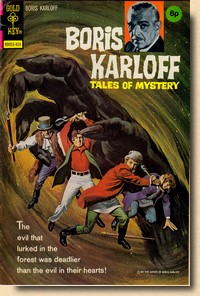
Boris Karloff Tales of Mystery #53
(April 1974)
|
|
But
what about Marvel's major rival and
competitor, DC Comics? DC had in fact
experimented with a few runs of pence
price variants in 1971 (McClure, 2010)
but then seemingly reached the decision
that they really favoured a British
market presence through licensed reprint
material published directly in the UK. It
wasn't until March 1978 that DC returned
with pence price variants and continued
to publish and distribute them up until
the cover date of September 1981. By that
time, the direct market had increased
significantly in importance for the
entire comic book industry, and the big
publishers Marvel and DC introduced
direct market editions (DME, as opposed
to newsstand editions) in late 1982,
there was no need for pence price
variants anymore as the DMEs were
multi-priced for the US home market as
well as the Canadian and British export
markets.
|
|
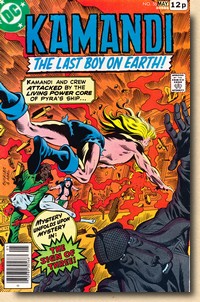
Kamandi #56
(May 1978)
|
|
|
| |
| BRITISH PENCE PRICE
VARIANTS & THE COLLECTOR'S MARKET |
|
| |
| As already pointed out, the
share of British pence price variant copies generally
amounted to somewhere up to 5% of the total print run of
any given title and issue. In purely mathematical terms,
a pence price variant will therefore be around twenty
times as scarce as a regular cent copy. In actual fact,
they are much rarer as their survival rate is
sigificantly lower and estimated by McClure (2010) to be
as low as 1-2%. For
obvious reasons, few pence price variants have found
their way back to the States, so the lion's share remains
in the UK to this day - where, in contrast to the
numerical scarcity, they can mostly be found and bought
without major problems. This is because pence price
variants have for the longest time been deemed
undesirable by the majority of UK collectors -
"penny dreadfuls" rather than "pennies
from heaven". A fact reflected in substantially
lower prices asked and paid on the collector's market
even for key issues in high grades:
"Currently,
general issues of pence copies seem to be valued at
about a half compared to cents copies in the lower
grades. From about Very Fine condition onwards the
gap tends to widen to perhaps a third of the US
value." (Comic Price Guide for Great
Britain,
2010)
For most British comic book
collectors, pence price variants are thus "penny
dreadfuls". For those who actually bought them at
the time, however, personal nostalgia may well result in
a different perception.
|
| |
BRITISH
PENCE PRICE VARIANTS
MARVEL COMICS COVER GALLERY
|
|
| |
| Here is a selection of
pence price variant titles published by Marvel between
1970 and 1981 which, although by no means complete, shows
the wide variety of material and genres offered to
readers in the UK. |
| |
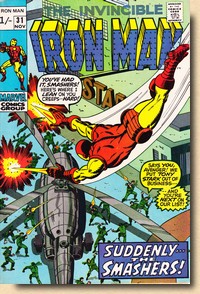
Iron Man #31
(November 1970)
|
|
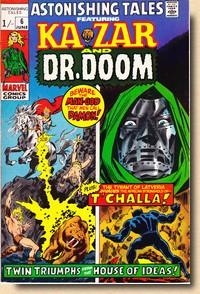
Astonishing Tales #6
(June 1971)
|
|
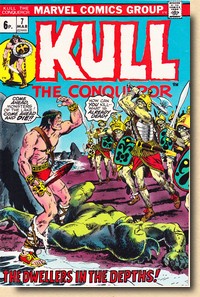
Kull #7
(March 1973)
|
|
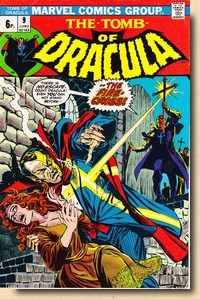
Tomb Of Dracula #9
(June 1973)
|
|
| |
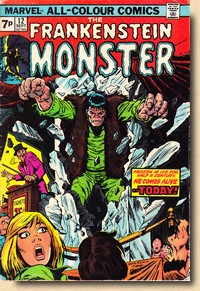
Frankenstein Monster #12
(September 1974)
|
|
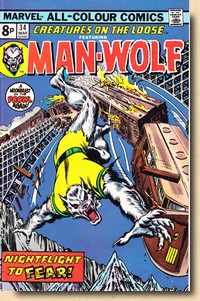
Creatures On The Loose #34
(March 1975)
|
|
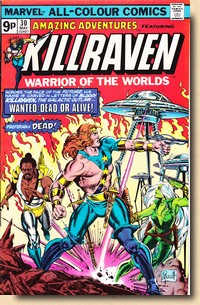
Amazing Adventures #30
(May 1975)
|
|
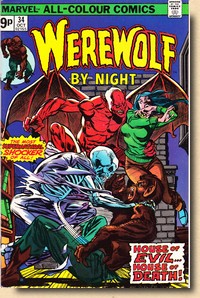
Werewolf By Night #34
(October 1975)
|
|
| |
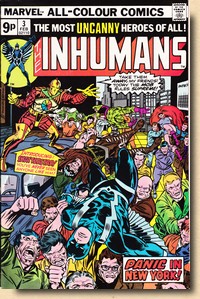
Inhumans #3
(February 1976)
|
|
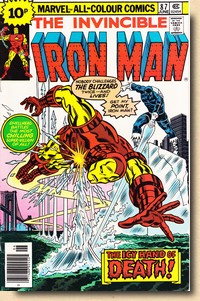
Iron Man #87
(June 1976)
|
|
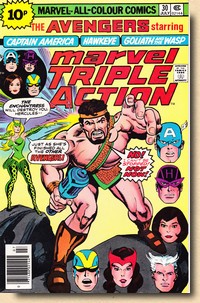
Marvel Triple Action #30
(July 1976)
|
|
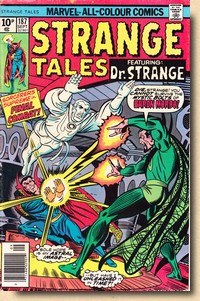
Strange Tales #187
(September 1976)
|
|
| |
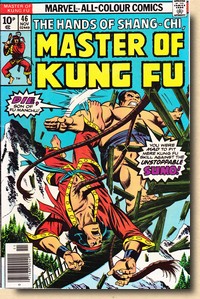
Master of Kung Fu #46
(November 1976)
|
|
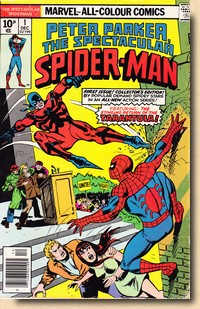
Spectacular Spider-Man #1
(December 1976)
|
|
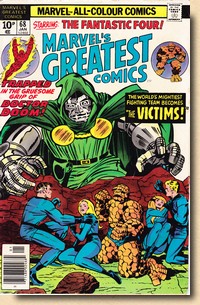
Marvel's Greatest Comics #68
(January 1977)
|
|
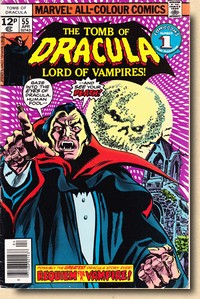
Tomb Of Dracula #55
(April 1977)
|
|
| |
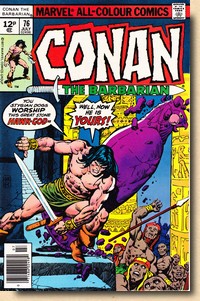
Conan the Barbarian #76
(July 1977)
|
|
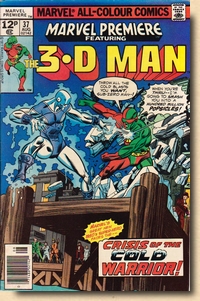
Marvel Premiere #37
(August 1977)
|
|
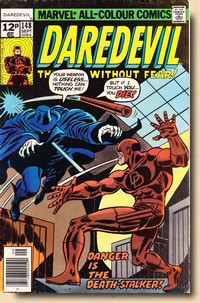
Daredevil #148
(September 1977)
|
|
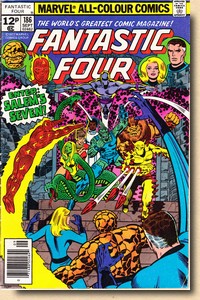
Fantastic Four #186
(September 1977)
|
|
| |
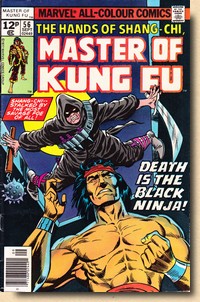
Master of Kung Fu #56
(September 1977)
|
|
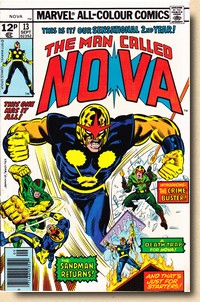
Nova #13
(September 1977)
|
|
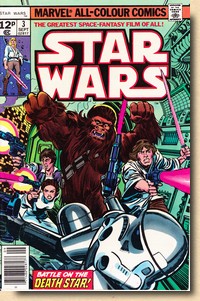
Star Wars #3
(September 1977)
|
|
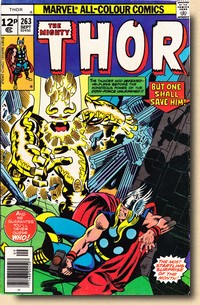
Thor #263
(September 1977)
|
|
|
| |
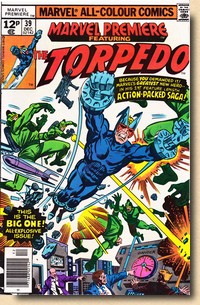
Marvel Premiere #39
(December 1977)
|
|
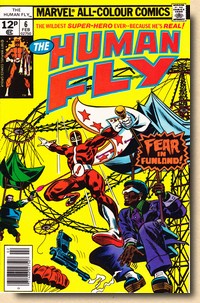
Human Fly #6
(February 1978)
|
|
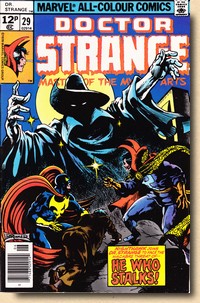
Doctor Strange #29
(June 1978)
|
|
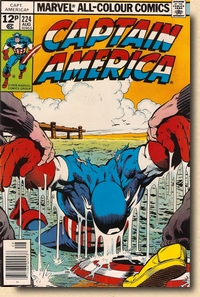
Captain America #224
(August 1978)
|
|
|
|
| |
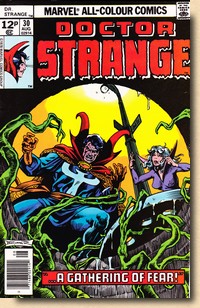
Doctor Strange #30
(August 1978)
|
|
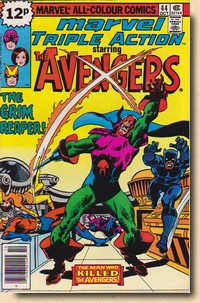
Marvel Triple Action #44
(October 1978)
|
|
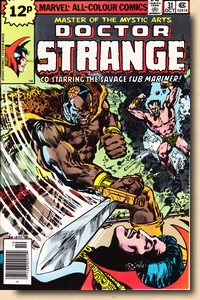
Doctor Strange #31
(October 1978)
|
|
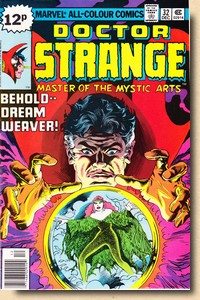
Doctor Strange #32
(December 1978)
|
|
|
|
| |
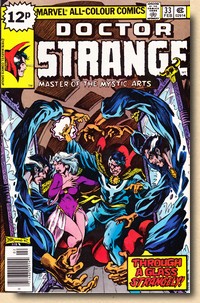
Doctor Strange #33
(February 1979)
|
|
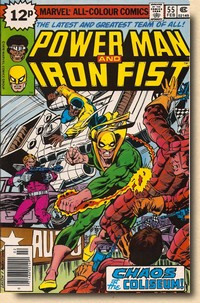
Power Man & Iron
Fist #55
(February 1979)
|
|
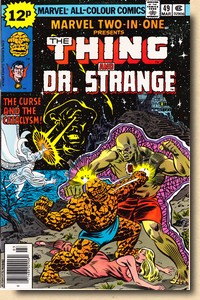
Marvel Two-In-One #49
(March 1978)
|
|
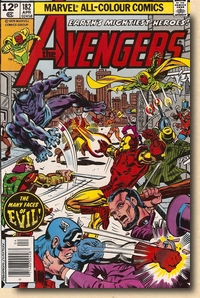
Avengers #182
(April 1978)
|
|
|
|
|
| |
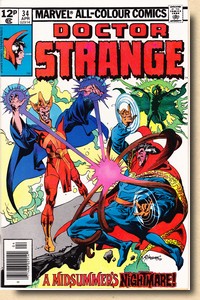
Doctor Strange #34
(April 1979)
|
|
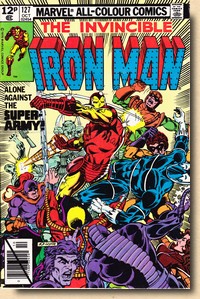
Iron Man #127
(October 1979)
|
|
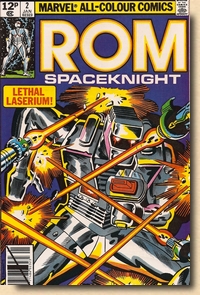
ROM #2
(January 1980)
|
|
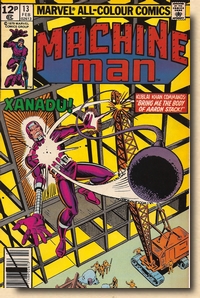
Machine Man #13
(February 1980)
|
|
|
|
|
| |
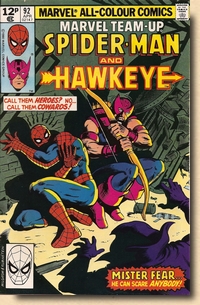
Marvel Team-Up #92
(April 1980)
|
|
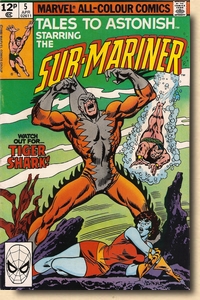
Tales To Astonish #5
(April 1980)
|
|
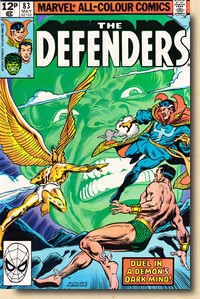
Defenders #83
(May 1980)
|
|
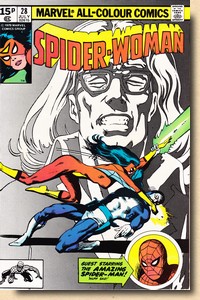
Spider-Woman #28
(July 1980)
|
|
|
|
|
| |
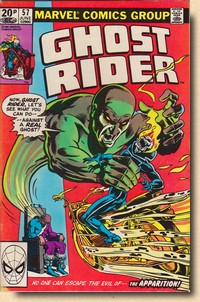
Ghost Rider #57
(June 1981)
|
|
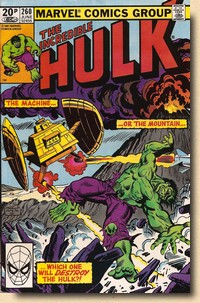
Hulk #260
(June 1981)
|
|
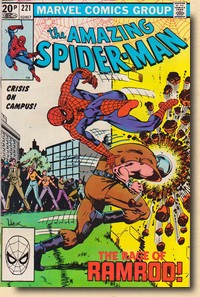
Amazing Spider-Man #221
(October 1981)
|
|


|
|
|
|
|
| |
| |
BRITISH PENCE PRICE VARIANTS
DC COMICS COVER GALLERY
|
| |
| Here is a (by no
means complete) selection of pence price variant
titles published by DC between 1978 and 1981.
Although the choice of titles on offer was far
more limited than Marvel's presence at the
newsagents, readers in the UK nevertheless got to
enjoy some variety. |
|
| |
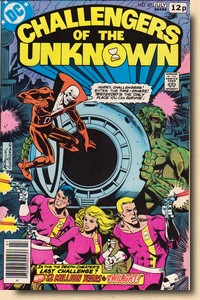
Challengers of the Unknown #87
(July 1978)
|
|
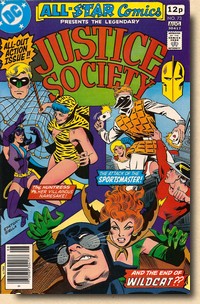
All-Star Comics #73
(August 1978)
|
|
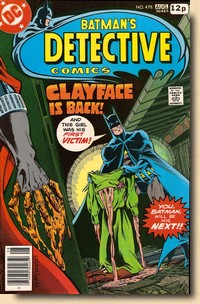
Detective Comics #478
(August 1978)
|
|
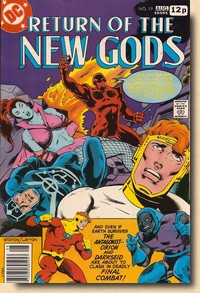
New Gods #19
(August 1978)
|
|
|
|
| |
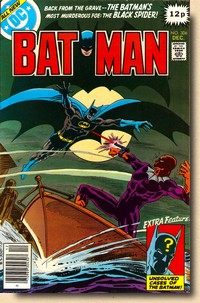
Batman #306
(December 1978)
|
|
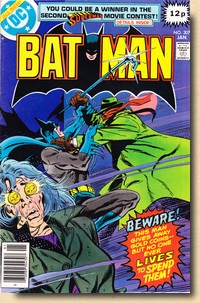
Batman #307
(January 1979)
|
|
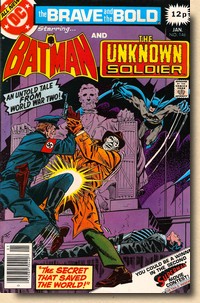
Brave and the Bold #146
(January 1979)
|
|
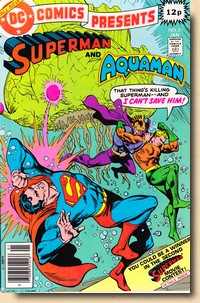
DC Comics Presents #5
(January 1979)
|
|
|
|
| |
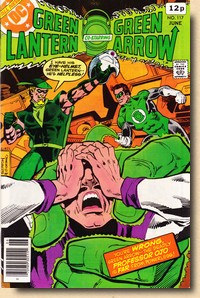
Green Lantern #117
(June 1979)
|
|
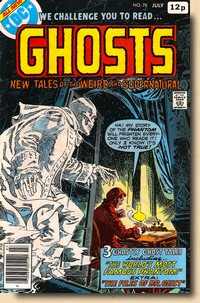
Ghosts #78
(July 1979)
|
|
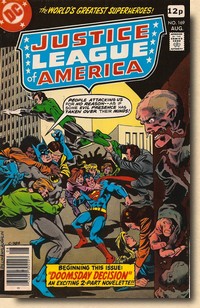
Justice League #169
(August 1979)
|
|
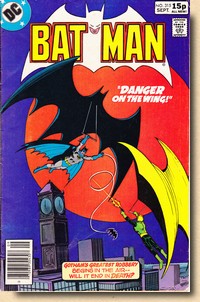
Batman #315
(September 1979)
|
|
|
|
|
| |
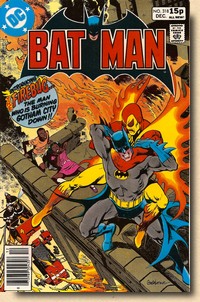
Batman #318
(December 1979)
|
|
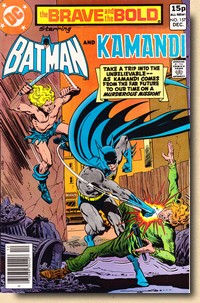
Brave and the Bold #157
(December 1979)
|
|
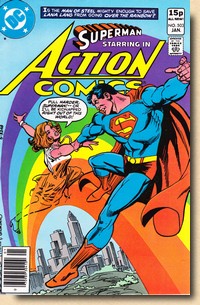
Action Comics #503
(January 1980)
|
|
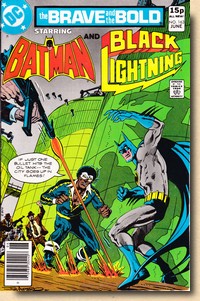
Brave and the Bold #163
(June 1980)
|
|
|
|
|
| |
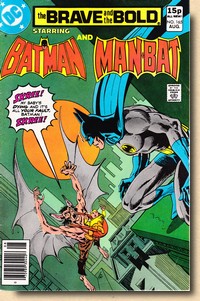
Brave and the Bold #165
(August 1980)
|
|
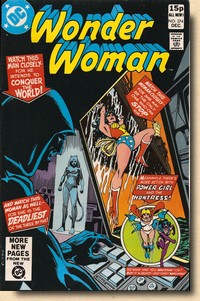
Wonder Woman #274
(December 1980)
|
|
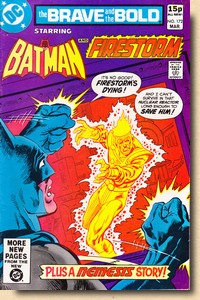
Brave and the Bold #172
(March 1981)
|
|
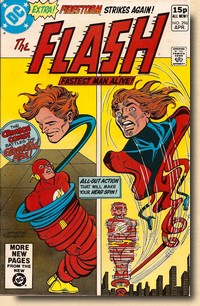
Flash #296
(April 1981)
|
|
|
|
|
| |
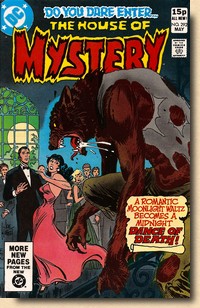
House Of Mystery #292
(May 1981)
|
|
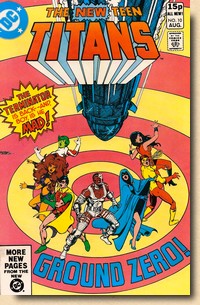
New Teen Titans #10
(August 1981)
|
|
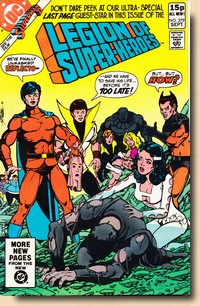
Legion Of
Super-Heroes #279
(September 1981)
|
|
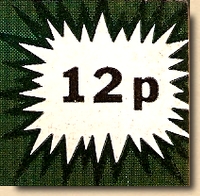

|
|
|
|
|
| |
| |
| BIBLIOGRAPHY FERRY Ervin Sidney
(1921) General Physics and Its Application to
Industry and Everyday Life, John Wiley & Sons
KIRBY Rob
(2013) "The Mighty World of Marvel UK", in Back
Issue #63, April 2013
LEE
Stan & THOMAS Roy (1998) "Stan the man
& Roy the boy: A conversation between Stan Lee and
Roy Thomas", originally published in Comic
Book Artist (issue 2), available on-line and
accessed 4 September 2007
McCLURE
Jon Martin (2010) "A History of Publisher
Experimentation and Variant Comic Books", in Overstreet
Comic Book Price Guide, 40th Edition, Gemstone
Publishing
PRITCHARD
Gordon (2009) "Ink Sequence - 4/C process &
beyond", The
Print Guide, available on-line and accessed 1 June
2015
SIUNTRES
John (2006) Marv Wolfman by Night, transcribed
from the podcast Word Balloon: The Comic Creator's
Interview Show, available online at
wordballoon.libsyn.com
|
| |
First
published on the web 1 June 2015
Text is copyright (c) 2015 Adrian Wymann

|
| |
























